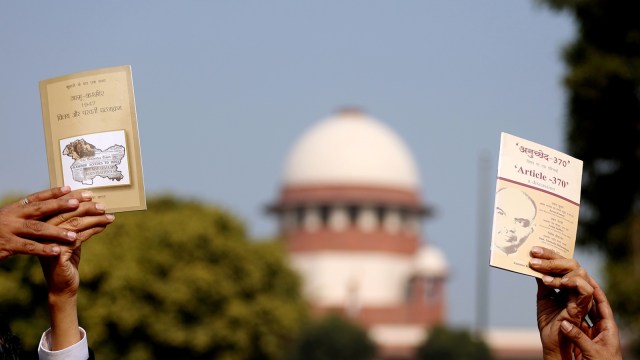
When, in December 2023, the Supreme Court of India handed down a judgment upholding the abrogation of Article 370 of the Constitution, it was primarily received — and discussed — in political terms: That is, the political character of Article 370, and the political incentives, and disincentives, that it had fostered over the years. Not much attention was paid to the constitutional reasoning that underlay the Court’s decision. This, however, was an important omission: Although high-stakes constitutional cases are invariably political in nature, ultimately, their resolution depends upon — and is underlain by — a particular constitutional philosophy.
In the Article 370 case, this philosophy — which appears in flickers through the majority judgment — was that of “integration”. While the Court rejected the constitutional mechanism that the government had deployed to abrogate Article 370, they nonetheless found that the Article granted the President of India unilateral power to abrogate the special constitutional arrangement between Jammu and Kashmir and the Union of India. This required the Court to engage in some interpretive gymnastics, such as explaining away a clause in the provision that made a recommendation by the Constituent Assembly of Jammu and Kashmir a necessary prerequisite before the President could act.
The Court did so by noting that Article 370 was born out of unique historical circumstances and that its ultimate goal was to ensure the incremental “integration” of Jammu and Kashmir with the Union of India. Smuggled into the Court’s reading, however, was a particular definition — or understanding — of the word “integration”: That is, integration as homogeneity. For the Court, a state having a “special status” — which, in this case, meant constitutionally guaranteed autonomy in certain respects — was antithetical to “integration”, which required a homogenous relationship between all the states and the Union of India.
This was, however, not the view of the petitioners who had challenged the abrogation of Article 370 before the Supreme Court. The petitioners, instead, advanced an alternative — and opposite — view of integration: That is, the diversity, plurality, and heterogeneity of a nation like India ought to be sufficiently reflected in its constitutional arrangements. Article 370, thus, was not to be understood as a “temporary” political expedient that was inserted to pave the way towards eventual homogenous “integration”, but as reflecting that constitutional pluralism was how a diverse nation was truly “integrated” and unified.
Indeed, this debate tracked a much older debate that had taken place at the time of the framing of the Constitution — albeit not in the context of Article 370. When the Constituent Assembly debated special autonomous areas for India’s Adivasi populations — which would ultimately be known as the Fifth and Sixth Schedules — the argument was conducted in a similar register. Opponents of the Fifth and Sixth Schedules called them “tribalstans” and argued that they would lead to secessionist tendencies. On the other hand, Adivasi representative Jaipal Munda eloquently defended Adivasi autonomy within the Indian Union, memorably invoking the image of two flags — the Indian flag and the flag of the Adivasi republic — which would fly side by side, without either one dominating the other.
This excursion into history — a history that inflects and informs the present — reveals how the Constitution was, and always has been, a terrain for the contestation of competing visions of power. The Article 370 case illustrated the clash of visions upon the axis of constitutional homogeneity or pluralism: Does the Constitution imagine a uniformity of power (concentrated towards the centre) in its federal arrangements, or a diverse and decentralised set of arrangements? This was the debate in the Constituent Assembly, a debate that was inscribed into the constitutional text and then played out in struggles over interpreting that text, within and outside the courtroom.
The Article 370 case, and its long history, represents just one of the many examples of how the Constitution is a terrain for competing visions of power. As this document now turns 75 years old — a feat of remarkable endurance, by any standard — beyond the homilies and the encomiums that seek to sanctify or sacralise it, we must reckon with its continuing legacy of power. In my book, The Indian Constitution: A Conversation with Power, I argue that in the course of the last 75 years, the Constitution has been characterised by a centralising drift: Visions of power that favour concentration within the central executive have often prevailed over more decentralised and distributed visions of power. This is partly inscribed within the constitutional text itself, but has also been further entrenched through numerous judgments of the Supreme Court. While there might have been reasons for favouring a top-heavy set of constitutional arrangements in 1950 — and indeed, these reasons were frequently articulated in the Constituent Assembly — the time is certainly long overdue to critically interrogate those reasons, and to ask whether and to what extent they still hold in the plural and diverse India of 2025. Engaging in that debate would be the truest act of service to the Constitution, as it completes its 75th birthday.
Bhatia is a lawyer and author of The Indian Constitution: A Conversation with Power